Reflections on the effectiveness of the Japanese mid-caliber artillery in Tsushima. H. 2
But first, it is necessary to determine the criteria for the effectiveness of artillery impact: we say “serious damage”, or “crucial damage”, “drop in combat capability”, but what is it? We will proceed from the fact that seriously reduces the combat capability of the ship:
1. The destruction or disabling (difficulty of action) of guns caliber 152-mm and more. It is well known that artillery caliber 75 mm and less did not play any significant role in the sea battles of the Russian-Japanese war, unless it is a question of fights of very small ships, like the 350-ton destroyers, but also there to achieve a noticeable effect many hits were required;
2. Disabling the fire control system;
3. Damage that leads to the ingress of water into the ship and caused a strong roll or trim;
4. Damage that reduces the speed of the ship or disables its steering, or otherwise impedes the control of the ship.
As for fires, the fire itself does not, however, give a significant decrease in the ship’s combat capability, and we will take them into account only if it led to the consequences listed above — that is, disabled artillery, reduced speed, and .d
The total number of shells of medium-caliber artillery that hit Russian battleships during the 27 battle of January 1904 g is relatively small (only four hits, the rest went to the cruisers), which does not give us a representative sample. Another thing is the battle in the Yellow Sea, which took place on July 28 1904. The statistics on hitting the Russian ships here is good because it can be considered very reliable - as is known, not a single battleship V.K. Witgefta was not killed in the battle and was not captured, so our sailors and engineers had enough time to study the damage to their ships upon their return to Port Arthur.
Squadron battleship "Tsesarevich"
A total of Tsesarevich received 26 hits, of which 14 - heavy shells (11-305-mm, 2-254-305-mm and one - 254 mm) and 12 - medium and small-caliber artillery (1-203-mm, 6-mm, 152-5-152-XNUMX-XNUMX-XNUMX-XNUMX-XNUMX mm -XNUMX-mm, and XNUMX - an unspecified caliber, which we decided to take for XNUMX-mm). What damage did they do?
Neither artillery nor fire control devices received significant damage. One 305-mm and one 305-mm projectile hit the nose turret of the 254-mm guns. The tower did not receive any significant damage and remained in service. The bow and stern 152-mm turret of the starboard received one projectile of unknown caliber (152-mm?). Serious damage was not, except in the nose tower from the blow tore the mount of the horizontal resistor.
The fire control system was not disabled.
The battleship received 9 hull hit with shells of various sizes. The most significant was the strike of an 305-mm projectile in an armored belt into the bow of the battleship (starboard, in front of the nose tower of the main caliber). The armor did not pierce the shell, but it slid down along it and exploded in front of the unarmoured skin. The holes did not form, but the seams of the casing were separated, as a result of which the ship took 153 tons of water, a roll formed in 3 degrees, which later had to be corrected by counter-flooding. The remaining hits did not cause significant damage.
An 305-mm armor-piercing projectile hit the conning tower, though not all. He fell short, ricocheted from the surface of the water, and then the fuse (bottom) worked, so that only the head part flew to the conning tower, but even that was enough to destroy the machine telegraph, intercom pipes, steering wheel, compass - as a result the ship at the time lost controllability. A 305-mm shell hit the navigational wheelhouse and destroyed the command personnel of the Russian squadron. Another projectile of the same caliber, which landed in the foremast, led to the fact that it held “on parole” and could collapse at any moment (one of the most important reasons that the battleship did not go to Vladivostok).
Three hits of the ship’s 305-mm projectiles, although they didn’t cause any problems in battle, seriously reduced the thrust, increasing coal consumption to such an extent that a breakthrough into Vladivostok without replenishing its reserves became impossible.
Thus, serious damage caused 7 large-caliber shells from 14-ing. At the same time, a dozen mid-caliber hits (2 - to medium-caliber towers, one - to the fore-mast, the rest - to the hull and superstructure of the battleship) did not cause the ship significant damage. The only serious damage that could be attributed to the impact of medium-caliber projectiles was that the fire tank was damaged by fragments, causing water to leak into the bow of the ship, which caused management difficulties as the battleship became worse at the helm. But the problem is that no source indicates a projectile, the fragments of which caused this damage.
Squadron battleship Retvizan
Got 23 hits, including 6 large-caliber projectiles (5-305-mm, 1-254-305-mm), four - srednekalibernymi (1-203-mm and 3-152-mm) and 13 shells of unknown caliber ( hereinafter referred to as caliber artillery).
An 305-mm projectile hit the nose tower caused a fire in it (due to impeccable calculation actions, it was immediately extinguished), but the electrical actuators did not act anymore, and the tower itself was stuck. Another projectile of the same caliber landed in the lower aft casemate of 152-mm guns - the guns did not receive damage, but the control devices for its firing were out of order.
Large-caliber (305-mm, according to other data - 254-305-mm) projectile landed in 51 mm armor plates in the bow, in the area of the hospital. The armor was not pierced, but lost its integrity (cracks) and pressed into the hull. As a result, water began to flow into the battleship (which was aggravated by the lack of drainage facilities in the affected compartment), the battleship received a trim on the nose.
Thus, of the six large-caliber projectiles caught in the ship, significant damage was caused by three. Seventeen medium- and small-caliber projectiles, which fell predominantly into the superstructures (but also into the pipes, masts, one 203-mm into the hull) of the battleship, did not cause Retvisan significant damage.
Squadron battleship "Victory"
Received 11 hits, including 4-305-mm, 4-152-mm and 3 of an unidentified caliber.
The only hit that had a significant effect on the ship’s combat capability happened in the first phase of the battle, when the 305-mm projectile hit the 229-mm armor plate under the nose casemates of the 152-mm guns. The projectile knocked out a cork in armor approximately the size of 356 on 406 mm, but in general it did not pass inside (only the head part was found in the ship), however, as a result of this impact the lower coal pit was flooded and three more compartments.
I must say that another 305-mm projectile landed in the starboard, destroyed the cabins of the conductors, and the hole was flooded with water. However, the constant pumping of water by pumps led to the fact that the water in the hull "did not linger" and did not entail any consequences for the ship - accordingly, we have no reason to consider this damage serious.
Of the seven hits of small and medium-caliber artillery, five fell into the corps, one into the chimney, and one more — no description. Four 152-mm projectiles knocked out 3 75-mm guns, but we agreed not to consider such damage significant. From the statements of eyewitnesses, we can assume that there were other hits of projectiles of various calibers in the onboard armor of the Pobeda (that is, more shells hit the ship than the 11), but they did not cause any damage to the ship.
Thus, one of the four 305-mm projectiles hit the ship was damaged by one, out of seven small and medium caliber ones - not one.
Squadron battleship Peresvet
The Japanese have 35 hit the ship. In armadillo got 13 large-caliber projectiles, including 11-305-mm 1-254-305-mm 1-254-mm and 22 shells of smaller caliber (1-203-mm 10-152-mm 1 -76-m and 10-uninstalled caliber).
Two projectiles (305-mm and 254-305-mm) hit the main-caliber nose turret, causing heavy damage to it and jamming it. The tower retained limited combat capability — the guns retained the ability to occasionally shoot, but the tower itself was practically unable to rotate. Another 305-mm projectile got into 102 mm armor, did not pierce it, but the lifting mechanisms of the 152-mm gun in the 3 casemay failed due to shaking. One 305-mm projectile fell under the average dungeon, causing the 152-mm gun to be jammed (two more 75-mm guns were disabled).
The 305-mm caliber projectile hit the foremast above the navigator's felling, and apart from other (not very significant) damage, the Barr and Stroude range finder was damaged.
Two 305-mm projectiles hit the bow of the battleship on either side of the bulkhead. Fortunately, the bulkhead itself miraculously remained undamaged, and kept the flow of water from the closest entrance to the stem (so we will not consider it significant). However, the second projectile led to serious flooding of the residential deck, as well as water ingress into the turret section, the nose mine devices and the dynamo machines. From more serious consequences the ship was saved by an intensive struggle for survivability. Another 305-mm projectile (apparently - armor-piercing), landed an armor plate in 229 mm, chipped off its part, pressed inside 6,6 cm, while the shirt behind the armor was crushed and destroyed, the edge of the armor plate was broken off. Through this hole, Peresvet received 160 tons of water, which had to be “straightened” by counter-flooding. In addition, two unspecified projectile (178-152-mm) caliber hit the 254 mm section of the armored belt, did not pierce the armor, but caused damage to the shirt and plating behind the stove - however, this did not cause significant flooding, so we ignore these hits.
2 305-mm projectile and three projectile caliber 120-152 mm got into the pipes of the battleship. In general, the Peresvet pipes were seriously damaged, causing an increased consumption of coal, and the reason for this was damage caused by 305-mm projectiles of the ship’s second and third pipes. However, modern researchers (V. Polomoshnov) suggest that they were still hit by 203-mm projectiles, because the nature of the damage (heavily damaged outer casing with a much less affected internal) is characteristic of 203-mm projectiles. Such injuries were inflicted by 203-mm shells of the armored cruisers of Kamimura to the pipes of the cruisers of the Vladivostok detachment, but for the Tsesarevich pipes it was typical of the opposite - high-explosive 305-mm shells made huge holes, approximately equal in area, in both the outer and inner shells.
With all the weight of such an argument, we still cannot accept it - yet Russian sailors, who had the opportunity after the battle to get acquainted with the nature of the damage, came to the conclusion that this is exactly 305-mm caliber. In addition, the author of this article may provide a logical explanation for such an incident. The fact is that the Japanese in large quantities in their shells of large-caliber guns changed the English fuses to "instantaneous" fuses of their own design (Ichjuin), which ensured the explosion of the projectile at the moment of contact with the armor, without any slowdown. Including this innovation has touched and armor-piercing shells (probably not all, but still). That is, theoretically, 305-mm armor-piercing projectiles with reduced explosive content (which, by the way, did not differ much in the mass of explosives from high-explosive 203-mm projectiles), but with "instantaneous" fuses, could theoretically get into the pipes, but caused known similarity of damage.
The mid-caliber artillery, again, has not achieved success. One projectile of unknown caliber fell into the aft tower, and another one - in the dungeon, but it did not damage the artillery. The bulk of the shells hit the hull (12 hits), but the only noticeable damage to the battleship was the massive failure of 75-mm guns not protected by armor - and that was all. Three more medium-caliber projectile hit the pipe (without causing serious damage), two - in the mast and three (of unknown caliber) - in bridges.
Thus, from 13 large-caliber shells 7 caused significant damage to the ship, and from 22 small-and medium-caliber shells did not cause serious damage to any.
I would especially like to note that we consider only hits during the day battle with X. Togo’s squadron, therefore damage to one 254-mm Peresvet gun with a direct hit by a Japanese destroyer’s 57-mm projectile during the night attack is not taken into account - and in any case case, it would refer to the effectiveness of small-caliber, rather than medium-caliber artillery.
Squadron battleship "Sevastopol"
Twenty-one hits, including 10 - 305 mm, one - 152-mm and 10 - an unidentified caliber.
One 305-mm projectile hit the 127 mm armor belt and did not pierce it, but the electric equipment of the right aft tower failed due to shaking, as a result of which the ammunition had to be supplied manually. A shell of unknown caliber shot down the range finder from the bridge.
One 305-mm projectile, hitting an 368 mm armor belt, pressed the slab inside, causing two corridors to be flooded and opened to flow in a place previously damaged by the Peresvet ram. Another high-explosive projectile of unknown caliber, having fallen into the casing of the aft pipe, interrupted the vapor pipes in the aft stoker, which caused the squadron battleship to drop to 8 nodes for some time.
Thus, from 10 305-mm shells, 2 and 2 from 11 other hits seriously damaged the ship. The remaining 7 shells of unknown caliber fell into the ship's hull, one into the mast and one 152-mm shell was found unexploded in the boat, they did not cause any special damage to the ship's combat capability.
Squadron battleship "Poltava"
The ship had 24 hits, including 16 large-caliber projectiles (15-305-mm and 1-254-mm), as well as 4-152-mm projectile and 8 projectiles of unknown caliber.
Two 305-mm rounds hit the unarmored side of the 152-mm guns under the right nose turret and stuck it. The range finder was damaged by splinters, but, unfortunately, it is not indicated what fragments of the projectile caused this damage, and judging by the description of the hits, both 305-mm and medium-caliber shells can claim this.
An 305-mm round projectile hit the stern, an unarmored side below the waterline. The premises of dry provisions were flooded, water also flowed into the steering compartment. The latter’s drains were drained by the crew’s labor, but they still had to use counter-flooding, taking water into one of the bow compartments. Two 305-mm shells struck an unarmored side just above the waterline, almost at the same place (aft lower officers' office), as a result of which a huge hole of approximately 6,5 per 2 meter was formed on board the ship and it began to overwhelm with water. Battleship received trim aft.
The fragment from the projectile hit through the light hatch of the engine room directly into the bearing of the left-side machine, which led to a drop in the speed of the battleship. However, it is not known where this fragment came from - the description of the corresponding hit of the projectile in the sources does not contain. In other words, it is completely unknown where this fragment could have come from - it could be from both large caliber and medium caliber shells.
Thus, from 16 large-caliber shells 5 caused serious damage, in addition, perhaps one of them was removed range finder. Twelve hits of medium-and small-caliber shells did not lead to anything, although perhaps the range finder still brought out the fragments of one of them. Plus to this, one fragment of the projectile unaccounted for in these calculations damaged the bearing in the car.
Summing up, we can state the following. Of the 63 large-caliber shells hit the squadron battleships of the 1 th Pacific Squadron, significant, significant damage inflicted 25 shells. Of the 81 projectile which fell into them with a caliber of 203 and below, only 2 inflicted similar damage. In addition, there are two serious damage (breaking by fire tank fragments on the "Cesarevich" and failure of the range finder on the "Poltava") caused by fragments of projectiles, the caliber of which we do not know. And there is still no one from who took the fragment, which damaged the car of "Poltava".
Thus, the true effectiveness of large-caliber and medium-caliber Japanese shells in the 28 June 1904 day battle, depending on where to distribute the controversial and unknown damage, is in between:
1. From 64 large-caliber shells, 28 from 81 small and medium-caliber - 2 caused significant damage;
2. From 63 large-caliber projectile significant damage inflicted 25 from 82 small and medium caliber - 5.
Thus, we see that even with the most favorable assumptions in favor of medium caliber artillery, its impact on large warships in the battle in the Yellow Sea is very small - from 30 hits that caused serious damage, the average caliber accounts for all 5 or less 17%. The probability of causing serious damage to the 254-305-mm projectile hit was 39,7-43,8%, and the average caliber projectile - only 2,5-6,1%.
“But what about the fires? After all, there was no mention of them, ”the respected reader will ask. Unfortunately, we have nothing to answer, because there is no description of at least one fire, which would have serious consequences for the squadron battleship. You do not need to think that the battleships of the 1 Pacific Pacific Squadron did not burn - for example, the squadron battleship Sevastopol recorded the presence of 7 fires during the battle. However, none of them produced any significant drop in combat capability.
We now turn to the squadron battleship "Eagle".
Perhaps the most difficult thing is determining the number of hits to the ship. There are quite a few sources in which they are cited, but the reliability of any of them inspires certain doubts.
Let's start with Vladimir Polievktovich Kostenko, who reported 42-305-mm and 100 152-203-mm hits, not counting the fragments and shells of small-caliber artillery. The numbers are obviously very high. Official Japanese historiography reports hit 12-305-mm projectiles, 7-203-mm and 20-152-mm, but the text clearly indicates that only part of the hits is indicated, not the total number of hits. Of great interest are the data of N. J. Campbell, who, based on the information of the British and German attaches, as well as on the many photographs available to him, came to the conclusion that 5-305-mm, 2-254-mm were in the "Eagle" , 9-203-mm, 39-152-mm shells. But still his data is incomplete - in his work he could not rely on Russian sources, and this is also very valuable information.
According to the author of this article, A. Danilov did an excellent analytical work in his article “Damage to the battleship Eagle in the Tsushima battle”. He brought together the data of known sources and concluded that horrible 11 projectiles caliber 254-305-mm Russian battleship, 3 203-305-mm, 10-203-m, 7 152-203-mm, 20-152-m and 12 - 76-152-mm. However, it should be understood that this is not the final result and other data can be obtained later. At the same time, it is impossible not to note the peculiarities of Japanese historiography, which managed to unleash fog even in such a relatively simple matter.
Well, now consider the most interesting - damage squadron battleship "Eagle". We will analyze them on the basis of descriptions of an eyewitness of the Tsushima battle of the captain 2 rank K.L. Shwede (Report to the Main Marine Headquarters of the Senior Officer of the squadron battleship Orel, February 1 1906, No. 195), comparing them with the “The battle of Tsu-Shima” data by NJ Campbell. Let's start with the artillery.
The bow of the 305-mm tower - serious damage caused by the projectile 203-305-mm.
From the report of K.L. Schwede: “12 inch. projectile trapped in the barrel of the left nasal 12 inch. guns, beat off a piece of the barrel foot on the 8 from the muzzle and threw it on the upper nasal bridge, where they killed three people lower. ranks and jammed him upright ... ... When hit 12 inch. projectile in the muzzle of the left 12 inch. nose gun - right 12 inches. the nose gun remained intact, only the right gun charger failed. They began to give charges to the surviving left charger. and shells thaw. "
According to NJ Campbell, the projectile was 203-mm, not 305-mm.
The aft 305-mm turret - severe damage caused by an 203-mm projectile or more.
From the report of K.L. Shwede: “A large-caliber projectile that has fallen into the stern of armor over the embrasure of the left 12 inches. the stern gun distorted the embrasure frame and, pushing the armor over the gun, limited the angle of elevation of the gun, so that the gun could only act on the 30 cable. ”
According to N. J. Campbell: “Part of the roof of the aft 12" turret above the left gun port was pushed inside by the 8 "projectile, limiting the angle of elevation of the gun."
Left 152-mm Nasal Tower - 203-305-mm projectile is disabled.
From the report of K.L. Schwede: "In the left nasal 6 inch. the tower was 3 falling 6 inches. shells; the tower continued to operate properly, "but then:" 6 inches. the left nose tower was completely destroyed, in it the left gun frame burst. At the bottom was dented serrated shoulder strap and broken gear; in the propellant supply compartment, the rollers of the tower pressed on one side, a coherent ring burst on the left side, and a plate of armor of the vertical table went off on the same side. Almost all bolts were torn off the thread. The upper part of the plates was supported by two bolts, the roof of the tower was raised above the embrasures, the caps were torn off the bolts. The main destruction was caused by an 12 inch. shell, trapped in the lower part of the armor rotating part of the tower. Total was in the tower 4 or 5 hits. 12 inch. the shell that destroyed the 6 inch. Nasal left turret, destroyed the paramedic's cabin in the upper deck and broke through the upper armored deck with a thickness of 1 1 / 16 inch. ”
According to NJ Campbell, the projectile that hit the turret failed 203-mm, not 305-mm.
The left middle 152-mm turret is serious damage caused by a 203-305-mm projectile.
From the report of K.L. Schwede: “Into the average 6 inch. The left turret hit two 6 inches. projectile; the first hit the vertical armor, but did not pierce it, exploded without harm to the tower; the second burst on the roof of the tower. Splinters that flew through the neck for throwing out the sleeves and through the commander's cap, seriously wounded the turret sergeant and 2's lower. chips - one deadly. The shatters smashed the mechanism for opening the door of the tower from the inside. Projectile 8 inch. or a large caliber, caught in the vertical armor of the table, ricocheted into a light board, at break it turned it, thus limiting the angle of fire of the tower in the stern of the beam. "
N. J. Campbell does not describe this damage (this does not mean that it did not exist, it’s just that the author described only a few, which seemed to him the most important damage).
The left aft 152-mm turret - serious damage caused by a projectile of unknown caliber, most likely, 203-305-mm.
From the report of K.L. Schwede: “guidance correctly, one gun is wedged with a segmental projectile due to a fragment that hit the barrel. Another weapon was completely dug up with fragments, which made it afraid to shoot from it. ”
N. J. Campbell does not describe this damage.
In principle, the projectile could be of any caliber, but there is a nuance - K.L. Shwede talks about a segmented projectile, and this is most likely 305-mm. At the same time, an 203-mm projectile exploded near the left stern tower - perhaps it was his fragments that damaged the guns.
The right nasal 152-mm tower could act only manually, the wires and motor windings were burned out. Serious damage caused by fragments of projectile of unknown caliber.
From the report of K.L. Schwede: “At this time, at the beginning of the starboard fire, there was a fire in the right nasal 6 inch. the tower commanded by leith. Girs The fire was caused by the ignition of cartridges in the fenders, which were ignited by a hot splinter that flew into the tower through the opening in the roof for throwing out the sleeves. All the servants of the tower out of order. "
According to NJ Campbell, the damage is caused by splinters, the caliber of the projectile is not specified.
The right middle 152-mm turret - serious damage caused by a caliber projectile - 203-305-mm.
From the report of K.L. Schwede: “it fixed vertical manual guidance, since the wires and motor windings were burned out, the elevators were fixed and cleaned, the broken chains were connected. The tower could not rotate, because a large-caliber projectile jammed it on the traverse and did not have time to chop off the mamerinets ”.
According to NJ Campbell, the projectile was 203-mm.
The right aft 152-mm turret - the guns are intact, but the turret itself is wedged. Serious damage caused by 305-mm projectile.
From the report of K.L. Shwede: “In mamerinets and in vertical armor of the right aft 6-inch. turret, horrible two 6 inch. projectile. The second projectile of the tower was wedged outside in the mamerinets, but the tower commander - Michman Bubnov with the servant of the tower, came out of it, cleared the mamerine, which was stuck with a stuck shell fragment. "
At the same time, K.L. The Swede does not describe the impact, finally jammed the tower, only confirms the fact of its failure.
According to NJ Campbell, the projectile was 305-mm.
Fire control system - disabled, serious damage caused by an 203-mm projectile.
From the report of K.L. Shwede: “There were three hits of 6 inch in the conning tower. shells below the slot, without causing harm. Splinters fell down the cabin continuously from the torn shells nearby. A lot of fragments flew through the slot, especially small ones that fell down standing in the wheelhouse. The 8-inch projectile, ricocheting from the water, hit the left side of the shell in the slot of the wheelhouse. The rupture of the Barr and Stroude ruptured, ruptured the combat signposts and crushed many negotiation tubes, damaged the compass and steering wheel with a rupture of the projectile and its fragments. ”
N. J. Campbell does not describe this damage.
In terms of other damage sustained by the battleship "Eagle", as a serious matter, one hit of an 305-mm projectile into the lower armor of the left side in the aft 305-mm turret can be distinguished. The 145-mm armored sheet was not pierced, but it shifted and water began to flow into the ship's hull. Shortly after this hit, the ship received a roll of 6 degrees, which had to be straightened by counter-flooding. There were other hits that displaced the armor plates or made a hole not too high from the waterline, but there is no information that either led to serious flooding and roll or trim, so they are not counted as serious damage.
On the "Eagle" 30 fires were recorded, two of them - in the towers of medium caliber were considered by us as serious damage. The rest: two - in the battery 75-mm guns, one each in the fore and aft ends, the rest - in the superstructures and on the deck, they did not cause a significant reduction in combat capability.
In general, we see that the statistics on the "Eagle" is very confused. We counted all 10 damage, which significantly affected the combat capability of the squadron battleship. But the caliber of the projectiles that caused them was more or less reliably determined in only three cases out of ten - two 305-mm (damage to the hull and the right aft 152-mm turret) and one 203-mm (disabled by the FCM). Of the remaining 7, 6 damage was caused by 203-305-mm projectiles, and one (fire in the right nose tower) was caused by a projectile, in general, of any caliber.
According to the author of this article, it is impossible to draw any reliable conclusions based on such vague data. And all the more it makes no sense to analyze hits in the dead ships of the 2 Pacific Pacific Squadron - we know even less about them than about the Eagle.
At the same time, some conclusions can still be made. It is noteworthy that in a battle in the Yellow Sea absolutely all the essential damage that was caused, or could have caused the shells of medium caliber artillery, relate exclusively to unarmored units. On the squadron battleship Sevastopol, the range finder was damaged and one fragment fell into the car through a pipe. Another disabled rangefinder, a shrapnel hit the car through the skylight on the battleship "Poltava") and splinter damage to the fresh water tank on the Revizan may be the result of medium-caliber missile hits (but it is possible that large-caliber missiles). At the same time, only one case (fragments that caused a fire in the right nasal 152-mm turret) on the Orel could cause 152-mm projectile to cause serious damage (at least theoretically) - all other damages are caused by at least 203- mm artillery. Also noteworthy are the numerous hits of 152 shells into the armored parts of the Eagle (three direct hits on the left nasal 152-mm turret and conning tower), which caused absolutely no damage, and the same was observed on the 1 ships Pacific Squadron.
In accordance with the foregoing, we can state that in battles of squadron battleships of the Russo-Japanese War, weapons of caliber 152-mm and less were practically useless, and the 203-mm guns may have had limited utility. But the final verdict in their respect can be made only after the appearance of reliable descriptions of damage squadron battleship "Eagle".
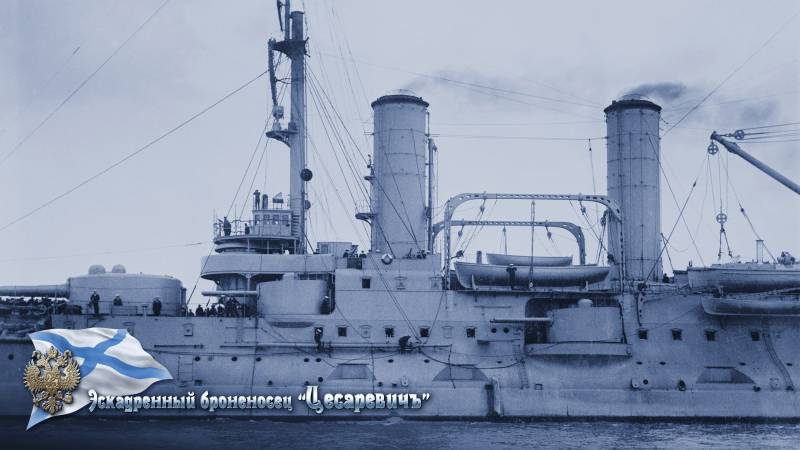

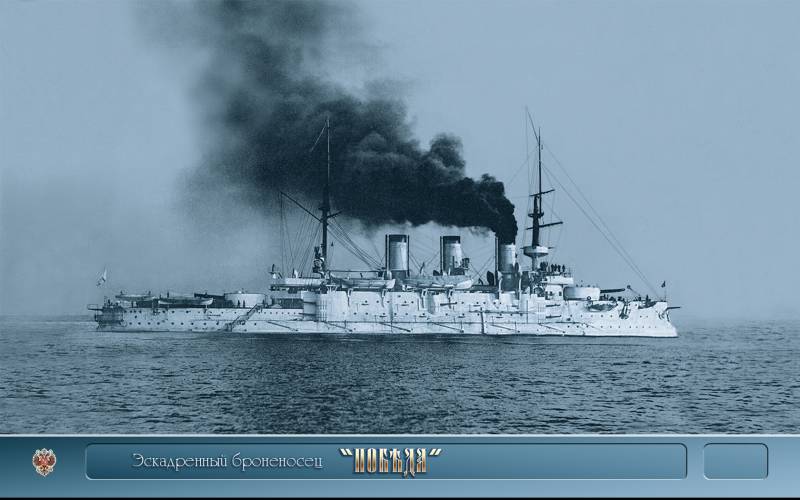
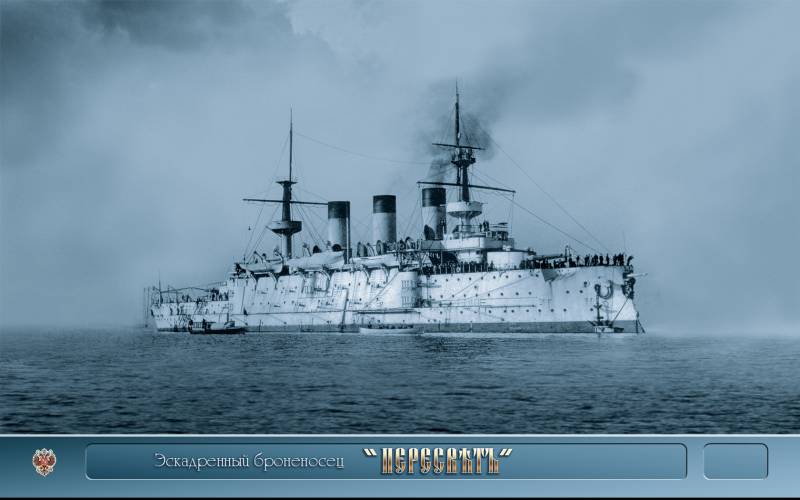
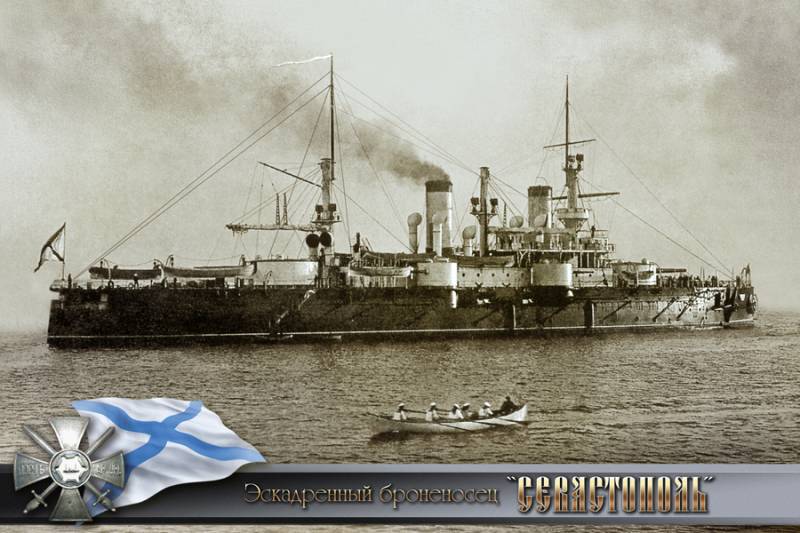
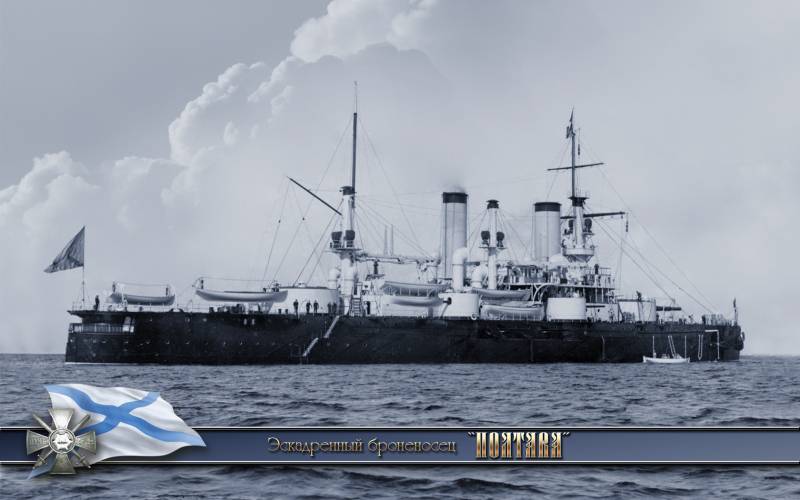
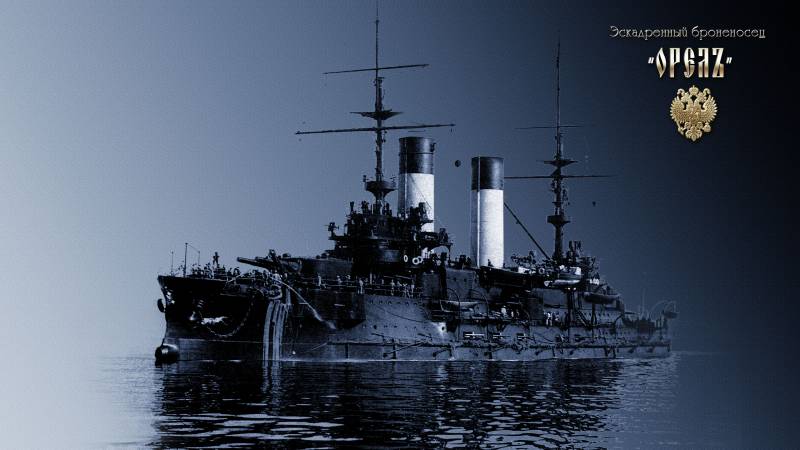
Information